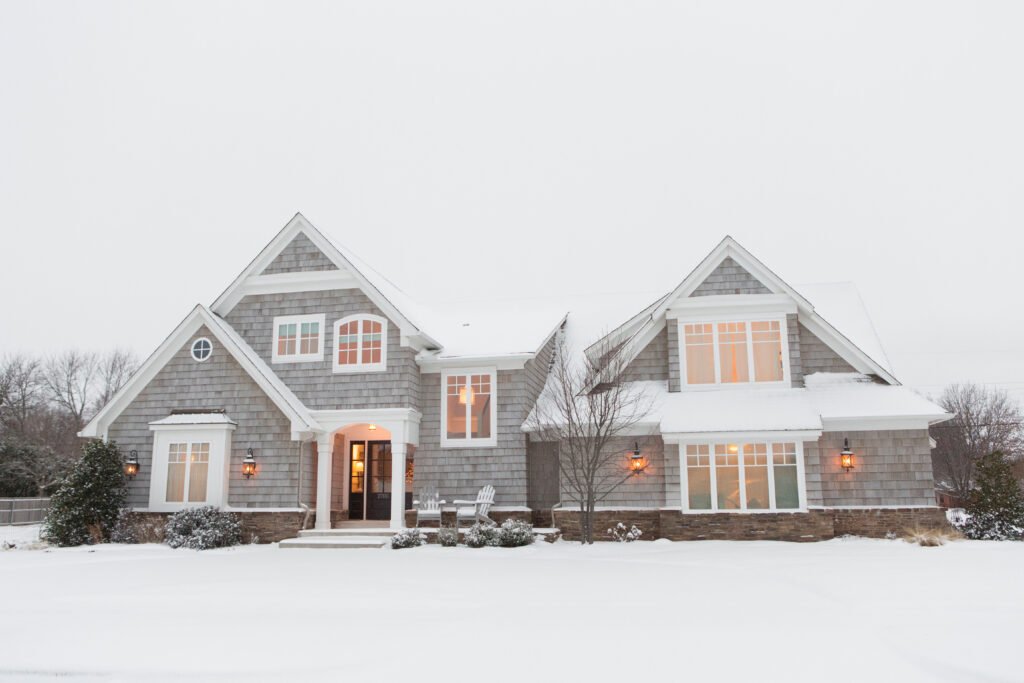Heating your home during winter can be expensive. In fact, the average American family spends about $2,000 per year on energy bills! This winter, there are several ways to keep those costs down. Check out these top tips and see what you can implement to keep money in your pocketbook.
1. Seal, Insulate, and Weatherize Your Home
Take time to walk around your home and identify leaks around windows and doors. Then, seal them with caulk, weather stripping, and expandable foam. This is the most obvious winter-energy saving tip out there—and the easiest to implement. It works best when you begin in autumn, winterizing your home before winter’s chill arrives: stopping drafts around doors and windows, air leaks in your attic or basement, and other places where warm air can escape from your house during winter months.
Properly insulated walls and ceilings will keep winter drafts at bay and can make a significant difference in your winter energy costs.
2. Install Smart Thermostats
Consider investing in smart thermostats. Smart thermostats help you improve the efficiency of your home’s heating and cooling system. By automatically adjusting the temperature in your home based on factors like ambient temperature, time of day, and occupancy, these smart devices can save you money when compared with manually controlling the thermostat or using traditional programmable thermostats.
3. Swap Out Incandescent Bulbs for LEDs or CFLs
Upgrading to energy-efficient light bulbs is one of the simplest ways to save energy (and money) at home. And although this winter energy saving tip does take an investment of up to $2 per bulb, it’s an easy way to cut your lighting energy use by 75% percent. Not to mention, this task will keep on giving even after winter is long gone. Those light bulbs last for 5-10 years!
4. Maintain Your Heating System
Winter is a good time to double-check that your heating system is running properly and make any necessary repairs. Are you on an annual HVAC maintenance plan? Most companies offer a plan that includes a summer and winter diagnostic, and many of these plans give the homeowner a discount on repairs that may be discovered.
This practice could save you money in the future, too, because it may prevent emergency repairs when the weather is coldest, and the repair fee could be inflated due to supply and demand.
5. Turn Down Your Water Heater
Your showers can be warm, but they shouldn’t be scalding. In an article from Consumer Reports, the U.S. Department of Energy says that running a hot water heater can account for up to 20 percent of your utility bill. That’s why the California Energy Commission recommends to manually reduce your water heater’s temperature to 120°F (down from the typical 140). This simple act can save you up to 11 percent in water heating costs; cutting showers in half can save up to 33 percent, the commission says.
6. Limit Space Heater Usage
Portable space heaters can be convenient, especially for rooms above a garage or in the basement that tend to get extra drafty or chilly. But they are not the most energy-efficient way to keep warm during winter months. If possible, try to limit the amount of time you use these devices and opt instead for more central heating solutions like upgrades to your home’s furnace or radiator heater. Additionally, make sure that any space heaters you use are rated as energy efficient by an independent testing agency, such as Energy Star.
7. Take Advantage of Sunlight and Natural Heat Sources
This one may seem obvious, but you would be surprised how many people overlook this simple tip. Opening curtains and shades during winter days allows sunlight in and traps solar heat inside your home. If possible, also keep doors open between these spaces and other parts of your home to allow for more efficient heat distribution.
8. Use Radiant Barriers
If you live in a very cold climate or need to heat an older home, adding radiant barriers to your roof can be a great way to reduce winter energy costs. These are materials that reflect radiant heat back into your home instead of allowing it to escape through the roof. A simple insulation upgrade can help save on energy costs year-round, not just during winter months.
9. Make Sure Windows are Energy Efficient
Last but certainly not least…focus your effort on your windows specifically. Energy efficient windows can save you hundreds of dollars. Not everyone can afford to completely replace old, drafty windows and upgrade them to triple-pane, newer technology materials. At KC Window Film, we can apply window films to any window, which helps insulate your home and keep out cold air. Learn more about these films and discover your options.
They are easy to install, are offered in a variety of types and styles, and can be a cost-effective way to save on winter energy bills. Additionally, they can make your home more comfortable and reduce the strain on your heating system, potentially extending its lifespan. By taking these steps, you can keep your home warm and comfortable while keeping costs under control. So why wait? Start reducing your winter gas bills and protect your home from the cold winter weather. Visit KC Window Film today for a free quote.

